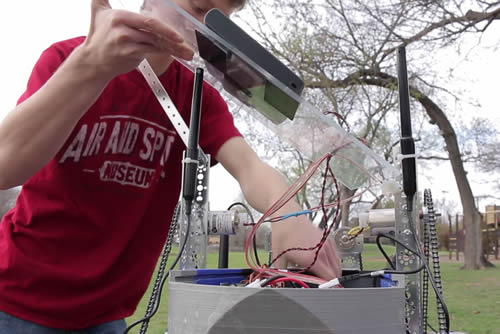STEM (science, technology, engineering, and math) is more than just an acronym or a collection of letters. Rather, it is an instructional movement that embodies cross-curricular concepts from four fundamental disciplines, as well as a research-based strategy that addresses the future needs of a technology-driven work force and sustaining a global economy. The importance of STEM is further validated by its prominence in the Next Generation Science Standards (NGSS).
One of the most effective instructional approaches toward the implementation of STEM in grade-level courses is through project-based learning (PBL). In this approach, instruction occurs through student-centered investigations focused on a specific topic driven by a set of objectives, culminating in a broadly-defined product or technique. Projects foster an environment of discussion, creativity, problem-solving, inquiry, modeling, and testing, and are applicable to students in all grade levels and subjects, but particularly within the STEM arena.
Implementing PBL in the classroom
During my 17 years as a classroom teacher, I have consistently implemented projects to help supplement and reinforce concepts critical toward a student’s understanding of overriding topics. These projects promote a student-centered approach and a sense of self-discovery, while also allowing students to collaborate with group members.
As you consider implementing project-based learning (PBL) into your classroom, I offer the following three effective instructional strategies based on my past experiences.
Strategy #1: Identify an engaging topic that is aligned with NGSS standards.
Here are two projects I’ve done in past years. Both projects were closely aligned to science and engineering NGSS, and greatly engaged students in the learning process.
- Fly Me to the Moon…Well, at Least the Upper Stratosphere: Students worked on an experimental payload that was launched using a high-altitude weather balloon. The payload was equipped with a Vernier LabQuest to collect scientific measurements and a GoPro camera to collect video footage during its trajectory.
- Oh, The Places You’ll Go…to Do Science with ROAVEE (Remotely Operated Amphibious Vehicle for Environmental Exploration): I challenged students to design, model, construct, test, and navigate a robotic vehicle—equipped with sensors to collect environmental data—on solid terrain as well as on water.
Strategy #2: Choose a project that can be accomplished within the presented time frame with reasonable expected outcomes.
An important aspect of these projects is the inter- and intra-group collaboration conducted both in class and outside of class. However, because of the demands of maintaining a science curriculum during class and some groups possibly waiting for the outcome of other groups before they can continue their work, student groups can connect via social media for online discussion or hold meetings after school to discuss progress, conduct trials, perform data analyses, and propose next steps. This underscores the basis of Strategy #1.
Presenting a project that is engaging and stirs the interest of the students makes it more palatable for students to advance their work within a group and pursue the overall objectives of the classroom project.
Strategy #3: Actively engage with each group, constantly assessing progress and promptly acting to troubleshoot potential issues and conflicts.
A significant advantage of PBL is the ability for students to work in a small-group setting, charged with either solving a problem or developing a novel solution. Working with other students to achieve similar goals can be a challenge—whether it be keeping the students on task without distractions from other students or social media, issues and conflicts that arise when one student is not invested in the group’s mission or resolving arguments.
I recommend asking for periodic progress reports from each group. This minimizes the possibility of a group not completing the project.
By implementing these strategies, you can provide your students with exciting, hands-on, technology-enabled PBL opportunities that will keep them engaged in STEM education and the learning process.
- How digital tools and AI can enhance social studies - April 23, 2024
- Using universal screening to improve student well-being - April 22, 2024
- 3 ways to avoid summer learning loss - April 19, 2024


